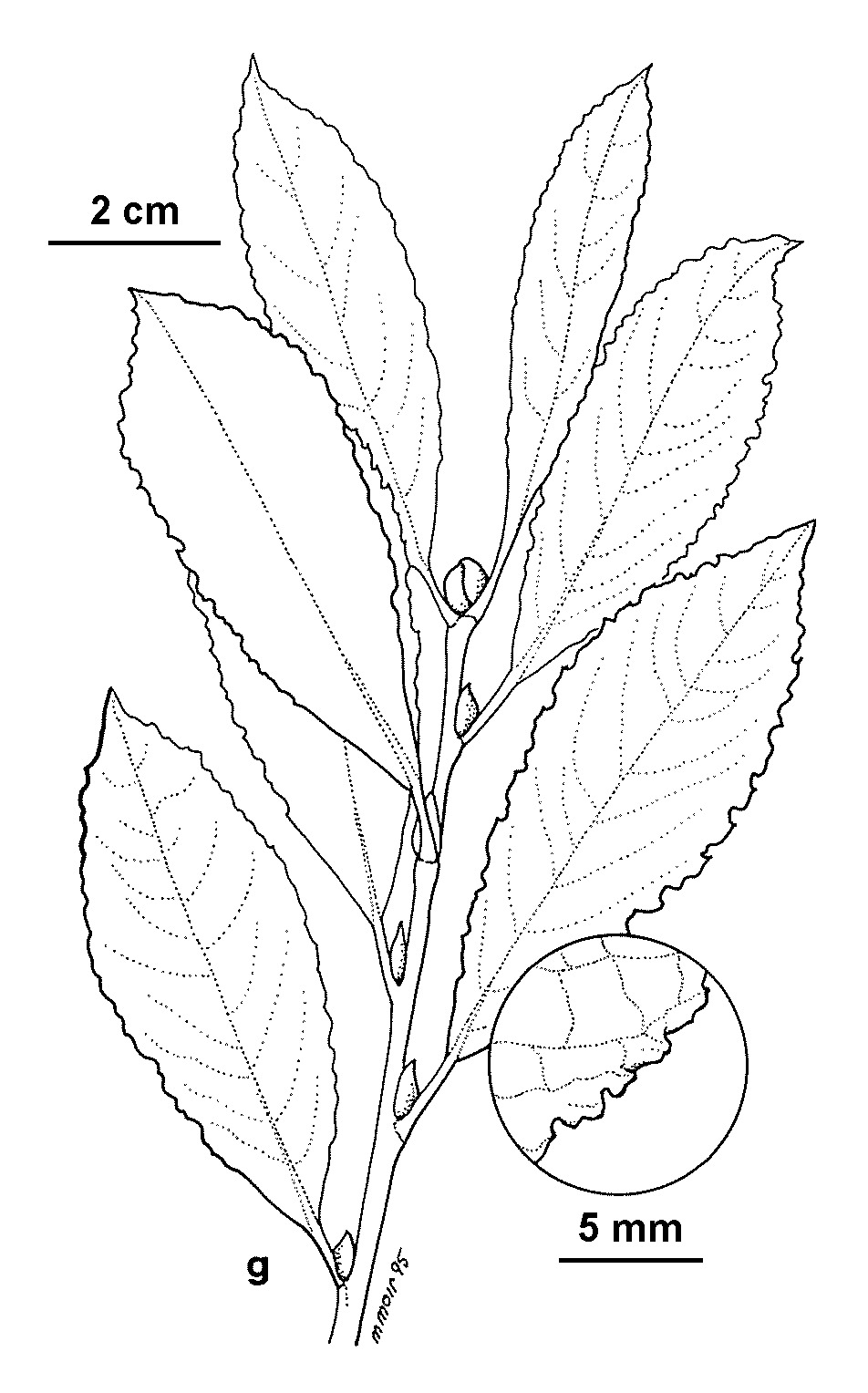Salix ×reichardtii
A.Kern. Pussy WillowErect, few–many-stemmed shrub or small tree to c. 12 m high, crown often rather narrow in outline; bark smooth, pale grey-brown, ultimately shallowly fissured near base of trunk; twigs coarse, densely pilose, usually becoming glabrous, olive-green to deep reddish-brown; wood sparsely striate; buds glabrescent or remaining densely long-pilose, rich chestnut, glossy. Leaves broadly elliptic to elliptic-obovate, 4–10.5 cm long, 2–4.5 cm wide, sparsely pubescent or becoming glabrous, deep green and glossy above except on the densely pubescent midrib, densely to sparsely long-pilose below (midrib and main veins densely pilose) and green to moderately glaucous; margins with coarse glandular teeth, usually undulate; stipules auriculate or asymmetrically ovate-acuminate to 13 mm long. Catkins (male only in Victoria) sessile or very shortly pedunculate, subtended by inconspicuous bracts, very dense-flowered, ovoid or shortly cylindric, 2–3.5 cm long, 1.5–2 cm wide; catkin-scales 2–3 mm long, black except for a brown base; stamens 2. Flowers Aug.–Nov.
VVP, GipP, CVU, NIS, HSF. Also naturalised SA, NSW, Tas. Indigenous in Europe, possibly Asia. Also naturalised New Zealand. Mostly on streambanks where naturalised to a limited extent by vegetative means; probably more widespread than the few records suggest.
Salix ×reichardtii is a hybrid between S. caprea and S. cinerea subsp. oleifolia or subsp. cinerea. Only male plants are present in Victoria.
A complex series of hybrids between S. ×reichardtii and S. cinerea subsp. cinerea, with male and female plants, has been noted on Dandenong Creek, Ringwood.
Carr, G.W. (1996). Salix. In: Walsh, N.G.; Entwisle, T.J., Flora of Victoria Vol. 3, Dicotyledons Winteraceae to Myrtaceae, pp. 387–398. Inkata Press, Melbourne.
 Spinning
Spinning